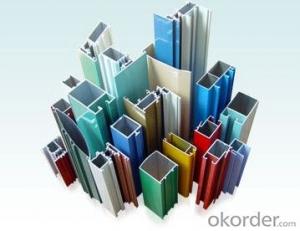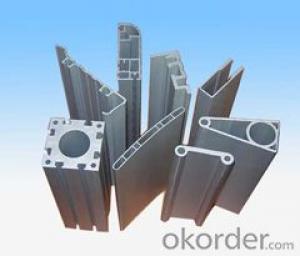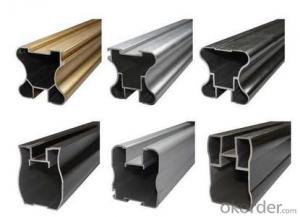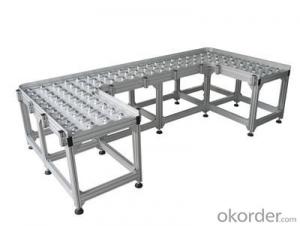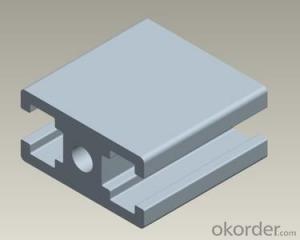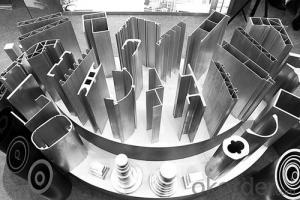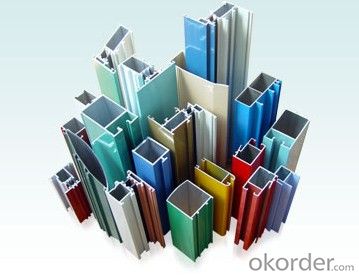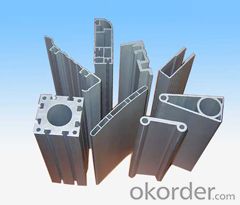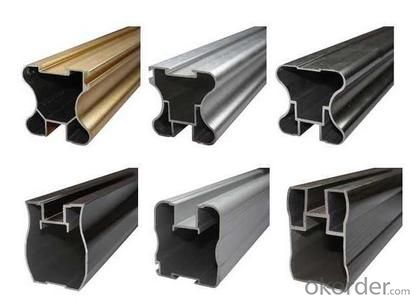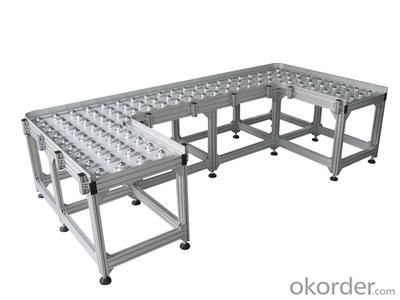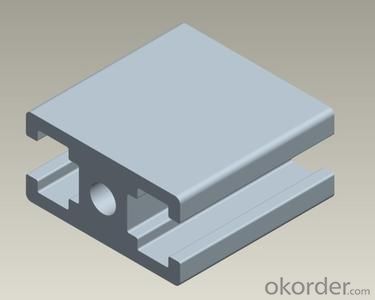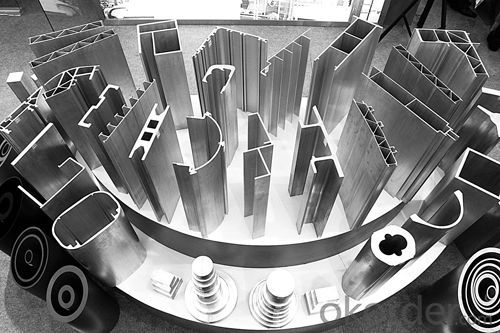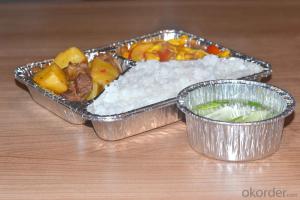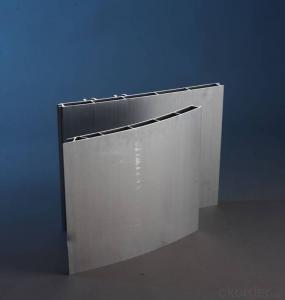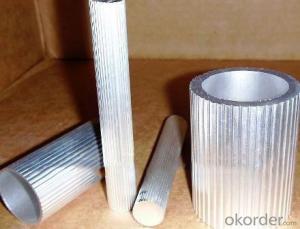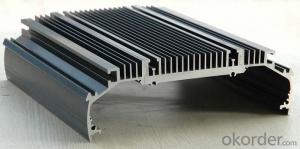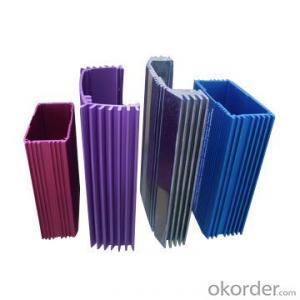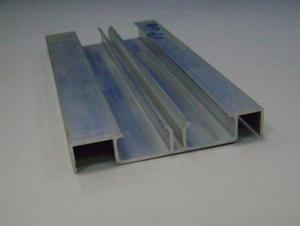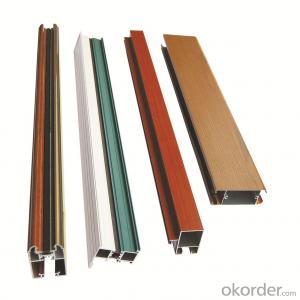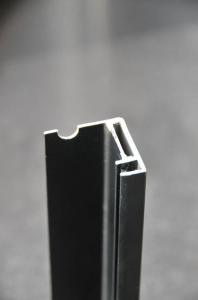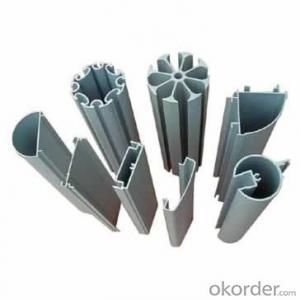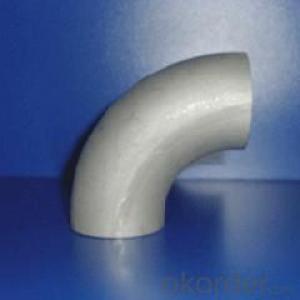Aluminum Standard Industrial Aluminium Extrusion Profiles
- Loading Port:
- China Main Port
- Payment Terms:
- TT OR LC
- Min Order Qty:
- -
- Supply Capability:
- -
OKorder Service Pledge
OKorder Financial Service
You Might Also Like
Aluminium is a relatively soft,durable, lightweight, ductile and malleablemetal with appearance ranging from silvery to dull gray,depending on the surface roughness. It is nonmagnetic and does not easilyignite. A fresh film of aluminium serves as a good reflector (approximately92%) of visible light and an excellent reflector (as much as98%) of medium and far infrared radiation. The yield strength of pure aluminium is 7–11 MPa,while aluminium alloys have yield strengths ranging from200 MPa to 600 MPa. Aluminium has about one-third the density and stiffnessof steel. It iseasily machined,cast, drawn and extruded.
Alu Profile:
Material | Alloy 6063,6061,6005or according to customer’s choice |
Temper | T3, T4, T5, T6 |
Surface | Anodize, electrophoresis, powder coating, PVDF coating, wood grain painting, matted, etc. |
Length | Coating 6.5 meters, Anodizing 6.5 meters, Mill finish 5 meters |
Application | Industrial, electrical equipment(TV set, air conditioner, refrigerator, computer), decoration,construction, transportation |
Custom Made | We can package following with customer's request. |
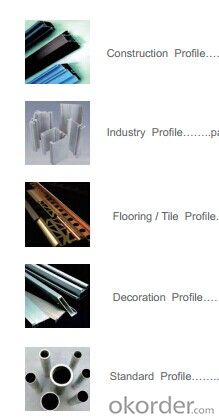
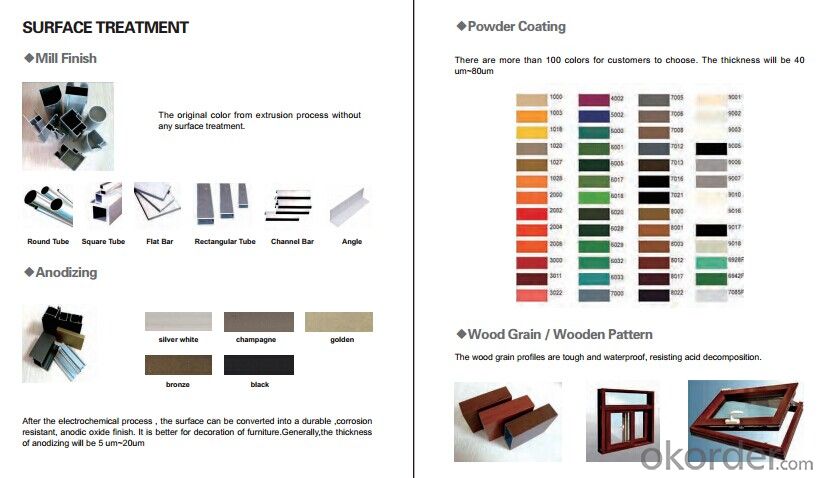
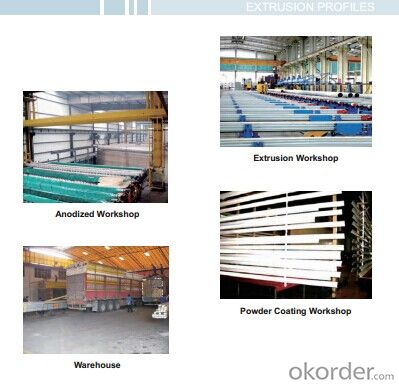
FAQ:
1. What is the form of payment?
Normally 30% TT, L/C at sight
2. Type of quotation?
FOB, CFR, CIF
3. Port of loading?
Guangzhou/Shenzhen port
4. Delivery time?
15-20 days after client’s deposit
- Q: How do aluminum profiles contribute to energy-efficient lighting systems?
- Aluminum profiles play a significant role in enhancing the energy efficiency of lighting systems. Firstly, aluminum is a lightweight and highly conductive material, allowing for efficient heat dissipation. This is crucial in lighting systems as excessive heat can reduce the lifespan and efficiency of the bulbs. By using aluminum profiles, the heat generated by the light source can be effectively transferred away, ensuring optimal performance and longevity. Furthermore, aluminum profiles are versatile and can be designed to accommodate various lighting components such as LED strips or bulbs, reflectors, and lenses. These profiles provide a stable and secure housing for these components, preventing any damage or misalignment that could impact the efficiency of the lighting system. Additionally, aluminum profiles often feature precision engineering, allowing for easy installation and maintenance, further contributing to the overall energy efficiency of the system. Another key advantage of aluminum profiles is their ability to act as a heat sink. By directing heat away from the light source, the profiles help to maintain lower operating temperatures, reducing energy consumption and increasing the efficiency of the lighting system. This is particularly important for LED lighting, as they are highly sensitive to heat and can experience significant light output degradation if not properly cooled. Aluminum profiles enable efficient thermal management, ensuring that the LED lights operate at their optimum level, saving energy and reducing the need for frequent replacements. Moreover, aluminum is a recyclable material, making it an environmentally friendly choice for lighting systems. Using aluminum profiles promotes sustainable practices by reducing the demand for raw materials and minimizing waste. This aligns with the principles of energy efficiency and conservation, as it reduces the overall carbon footprint of the lighting system. In summary, aluminum profiles contribute to energy-efficient lighting systems by facilitating effective heat dissipation, providing a stable housing for lighting components, acting as a heat sink, and promoting sustainable practices. These profiles enhance the performance, lifespan, and energy efficiency of lighting systems, making them an essential component in modern lighting solutions.
- Q: This question asks for the various types of aluminum profiles that are utilized in roofing systems.
- <p>Aluminum profiles for roofing systems come in various types, each serving specific purposes. Common types include: 1. <strong>Gutter Profiles</strong>: Used for collecting and directing rainwater from the roof. 2. <strong>Fascia Profiles</strong>: Cover the ends of rafters and provide a finished edge to the roof. 3. <strong>Soffit Profiles</strong>: Installed under the eaves to allow ventilation and conceal the underside of the roof. 4. <strong>Purlin Profiles</strong>: Support the roof sheeting and are placed perpendicular to the rafters. 5. <strong>Rafter Profiles</strong>: Mimic traditional wooden rafters and provide structural support. 6. <strong>Roof Ridge Profiles</strong>: Cap the ridge of the roof, where two slopes meet. 7. <strong>Hip and Valley Profiles</strong>: Used at the intersection of two sloping roof surfaces. Each profile is designed to withstand weather conditions and provide durability, with specific dimensions and shapes tailored to the roofing system's requirements.</p>
- Q: Are aluminum profiles suitable for exhibition kiosks?
- Yes, aluminum profiles are suitable for exhibition kiosks. Aluminum is lightweight, durable, and easy to work with, making it an ideal material for constructing kiosks. Additionally, aluminum profiles can be customized and offer a sleek and modern appearance, enhancing the overall aesthetics of the exhibition kiosk.
- Q: This question asks if there are any health hazards linked to handling aluminum profiles.
- <p>Generally, working with aluminum profiles does not pose significant health risks. Aluminum is a lightweight, corrosion-resistant metal that is widely used in various industries. However, inhalation of aluminum dust or fumes over long periods may cause respiratory issues. Workers should use appropriate personal protective equipment (PPE) such as masks and gloves to minimize exposure. Additionally, aluminum can cause skin irritation in some individuals, so skin contact should be avoided. It's important to follow safety guidelines and maintain good hygiene practices when working with aluminum profiles.</p>
- Q: T6 should be 140MPa, while the aluminum profile specification should be 150MPa. Should that be the standard?Code for design of glass curtain wall... And the calculation formula of bolt connection, what is the compressive strength value of aluminum profile?Prawns help you, 3Q~
- In this case, not only is the bending deformation produced by tensile stress, it is a large part of the moment and shear, in a large error.
- Q: Is it possible to recycle aluminum profiles and use them again in construction projects?
- <p>Yes, aluminum profiles can be recycled and reused in construction. Aluminum is highly recyclable, and the recycling process requires significantly less energy compared to the production of new aluminum. Recycled aluminum maintains its properties, making it suitable for various construction applications. This practice not only conserves resources but also reduces waste and environmental impact.</p>
- Q: Can aluminum profiles be used for electrical cabinets?
- Yes, aluminum profiles can be used for electrical cabinets. Aluminum is a lightweight and durable material that offers excellent corrosion resistance and electrical conductivity, making it suitable for use in electrical cabinets. Additionally, aluminum profiles can be easily customized and fabricated to meet specific design and functional requirements of electrical cabinets.
- Q: Is it possible to recycle aluminum profiles and repurpose them for different uses?
- <p>Yes, aluminum profiles can be recycled and reused in other applications. Aluminum is highly recyclable, and the recycling process requires significantly less energy compared to producing aluminum from raw materials. Recycled aluminum maintains its properties, making it suitable for a variety of new applications, such as construction, automotive, and consumer goods. The recycling of aluminum profiles not only conserves resources but also reduces waste and environmental impact.</p>
- Q: Inquire about the various uses of aluminum profiles within the field of architecture.
- <p>Aluminum profiles have a wide range of applications in architecture due to their strength, durability, and lightweight properties. They are commonly used in curtain walls, which are the exterior coverings of buildings, providing both aesthetic appeal and structural integrity. Aluminum profiles are also utilized in window and door frames for their resistance to corrosion and ability to withstand various weather conditions. They are employed in structural glazing to hold glass in place securely. Furthermore, aluminum profiles are used in sun shading systems to control the amount of sunlight entering a building, enhancing energy efficiency. They are also found in handrails, balustrades, and other safety features for their strength and low maintenance requirements. Overall, aluminum profiles contribute to the sustainability and modern design of architectural projects.</p>
- Q: This question asks if aluminum profiles can be utilized in the construction of exterior walls and roofs.
- <p>Yes, aluminum profiles are commonly used in exterior walls and roofs due to their durability, corrosion resistance, and low maintenance requirements. They offer a lightweight alternative to traditional materials and can be designed to withstand various weather conditions. Aluminum profiles are also recyclable, contributing to their sustainability. They are often used in modern architecture for both aesthetic and functional purposes, such as in curtain walls, window frames, and roofing systems.</p>
Send your message to us
Aluminum Standard Industrial Aluminium Extrusion Profiles
- Loading Port:
- China Main Port
- Payment Terms:
- TT OR LC
- Min Order Qty:
- -
- Supply Capability:
- -
OKorder Service Pledge
OKorder Financial Service
Similar products
Hot products
Hot Searches
Related keywords
